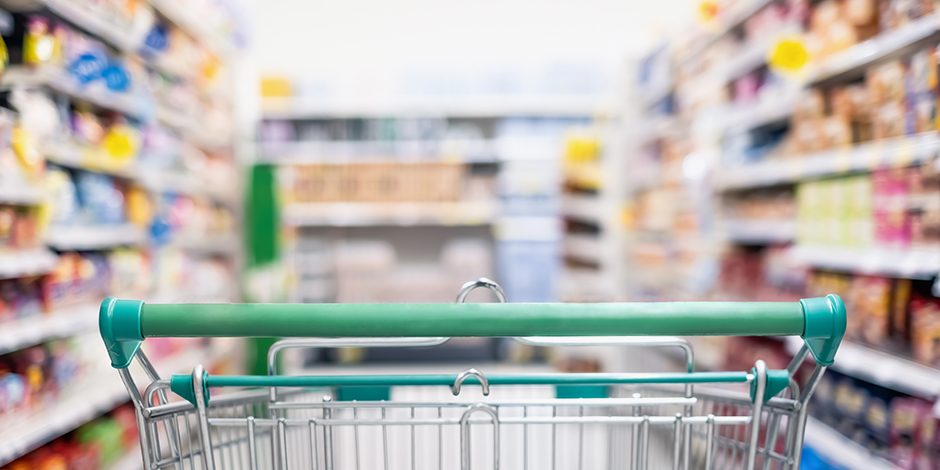The consumer packaged goods (CPG) industry in North America is the largest in the world, valued at approximately $2 trillion. Dominated by giant legacy brands including Coca-Cola, P&G, Unilever, and L’Oreal, the CPG industry is not only large, but also in charge of the U.S. economy. According to the Consumer Brand Association, the CPG industry provides 20.4 million jobs—approximately 1 in 10 jobs in America. It also accounts for roughly 10% of United States GDP at $361.3 billion. Vital to the economy and everyday life, the CPG industry appears steady and stable on the surface. However, much like the retail industry, CPG companies are working to change their historic operations and utilize big data to adapt to today’s uncertain economic landscape and changing customer preferences.
The difference between yesterday and today in CPG is the ability to not only capture big data, but also to use technology to analyze it and gain powerful insights. However, not many have reached the big data and analytics expertise of customer-centric powerhouses like Amazon with end-to-end supply chain data visibility. Many of the legacy CPG wholesalers are at a data disadvantage and need to optimize operations, digitize, and adapt to today’s changing landscape. With lack of data visibility along the supply chain and promotional control through resellers, CPG needs big data solutions, and now is the time to invest. We are in the longest period of economic expansion in U.S history, and the faster CPG companies invest in big data analytics the better, as each day becomes more uncertain and closer to a potential downturn.
Additionally, traditional CPG companies are realizing that a heavy focus solely on optimizing operations is not enough. In a Financial Times interview, 3G Capital’s co-founder Jorge Paulo Lemann described feeling like a “dinosaur” in the rapidly changing CPG market. Known for buying companies like Kraft Heinz, cutting costs, and making immediate returns for investors, 3G is realizing that this will not drive value like it once used to in the new digital age. The company is now investing in new products that will delight the new-age consumer with a declining taste for processed foods, and making massive investments in ecommerce technology.
It is well known that in the CPG industry the consumer wields the buying power, and capturing their interest and share of wallet is more difficult than ever. Acosta notes that the path to purchase is no longer linear, and loyalty continues to become fragmented as customers switch between physical and virtual channels to meet their needs. The significant 35.4% surge in U.S. online CPG sales in 2018—particularly in non-food items like personal and home care—showcased the online potential for CPG companies. Now, companies that have historically sold through retail channels are adopting direct-to-consumer (DTC) initiatives to build relationships with customers, harness collected data, and meet the needs of consumers who prefer to shop online.
However, it’s not only how consumers are purchasing, but what they are purchasing. In an industry that grew by 2% overall last year—private label sales increased by 4%. Private label sales are growing four times faster than national brand sales. CPG companies find themselves competing with their retail partners for shelf space, promotion, and share of wallet—another reason why CPG companies are exploring DTC options to lessen competition and gain more control over their product presentation. Consumers also prefer sustainable products, as affirmed by our recent study. Between 2013 and 2018, 50% of CPG growth came from sustainably-marketed products, and in 2018 sustainable products accounted for 16.6% of the CPG market in dollar sales. Becoming more sustainable will be a necessity in CPG to guide product decisions. Keurig woke up and smelled the coffee in 2016 when the German city of Hamburg banned K-cups from government-run buildings for their unsustainable design. Other companies could face the same fate if they fail to adapt to changing consumer demand for eco-friendly products.
Launching successful products remains a challenge for even the most experienced CPG companies. The average product failure rate sits around 80% and we can’t forget the massive amount of investment and time lost as a result of all these failures. With high competition and crowded shelves, using big data solutions to determine winning products, packaging, and marketing campaigns prior to launch is key to success. First Insight offers a Big Data solution for CPG companies that implements the Voice of the Customer, Artificial Intelligence, and Machine Learning to provide actionable insights based on predictive analytics. This solution is ideal for both wholesalers and brands who lack retailer data visibility and retailers who want to understand which brands and products are valued most by consumers. Our customers receive actionable test results within 24 to 48 hours that clearly delineate next steps, include consumer comments, and much more.
As one of the foundational industries to the U.S. economy, the CPG industry appears fairly steady and secure. But in these uncertain times, it is important to prepare for the future. Past success does not indicate future results, and understanding the changing landscape, customer preferences, and big data can give CPG companies the edge they need to compete and launch winning products.













